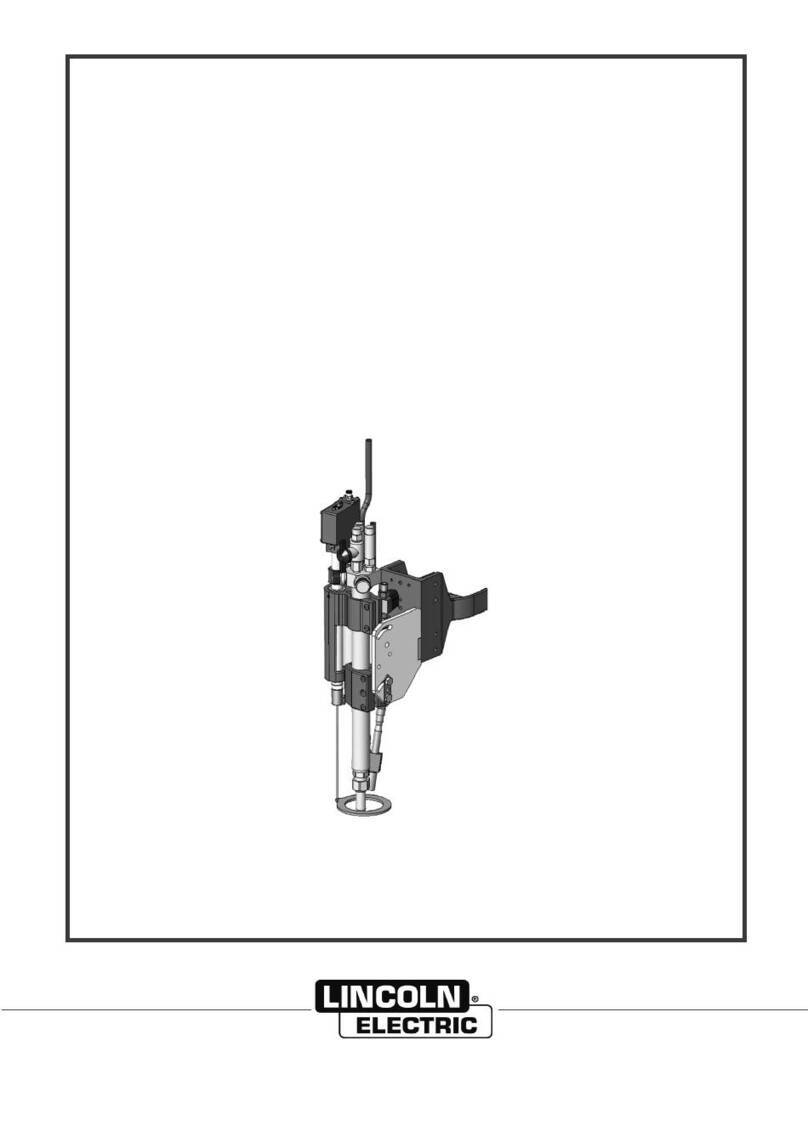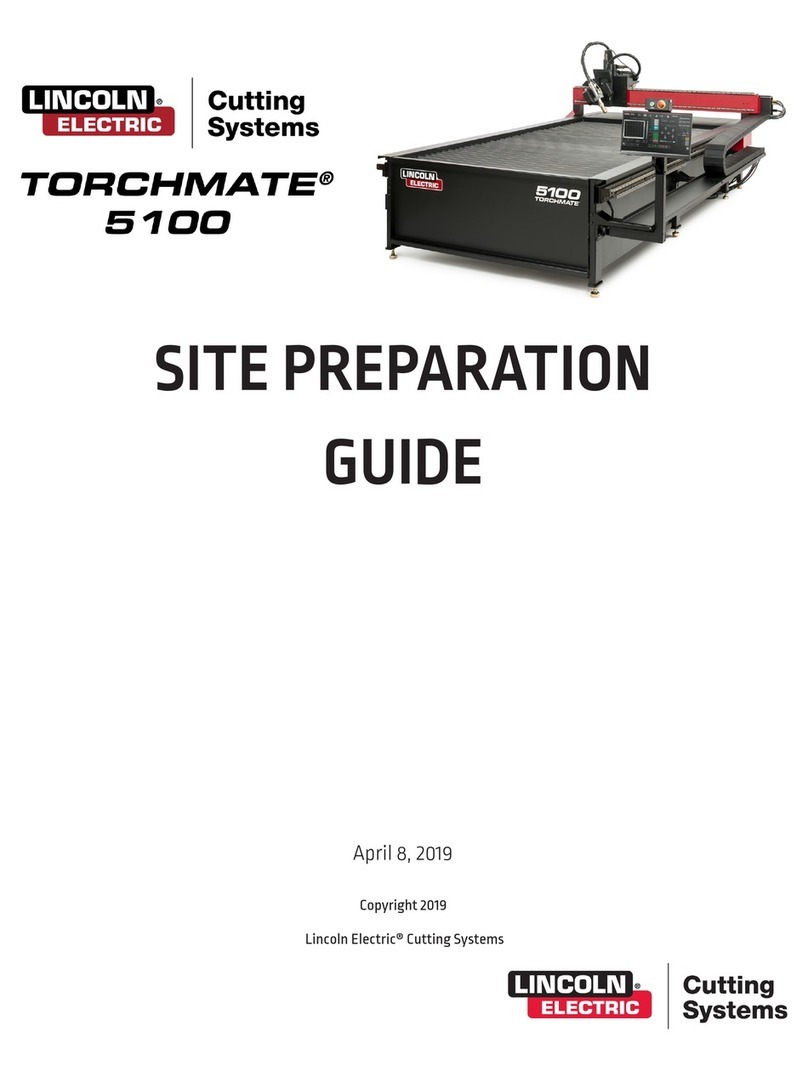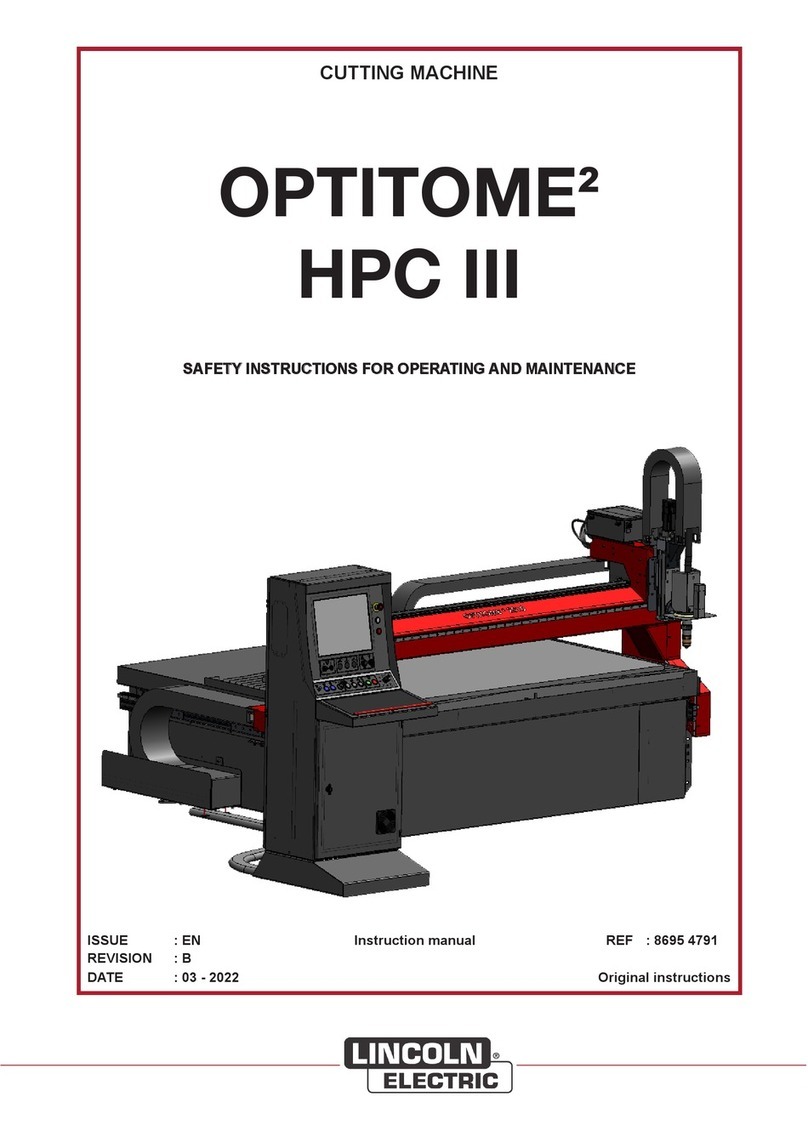
Torchmate 5100 viii
Unpacking your new machine (FlexCut™ 200/FlexCool™ 35)
FlexCut 200 is liquid cooled and is supplied with the FlexCool 35. For complete instructions on the FlexCut 200
and the FlexCool 35 see their corresponding user guides.
FlexCut 200 and FlexCool 35:
Unpacking the FlexCool 35:
The packaging of the cooler is designed to withstand shipping abuse. If any
shipping damage has occurred, contact your certied Lincoln distributor
or service center. When unpacking the unit, avoid thrusting sharp objects
through the carton, which may damage the machine. Below is the recom-
mended procedure for unpacking the cooler:
• Cut and remove banding straps around skid and carton
• Remove carton
• Cut and remove banding straps around skid and cooler
• Remove cooler, literature, and other items
Save the instruction manual and service directory supplied with the
FlexCool 35 for parts orders and future maintenance service.
Mounting the FlexCool 35 underneath the FlexCut 200:
The FlexCool 35 can be mounted underneath the FlexCut 200 machine or by
itself on a at surface.
No power source should ever be installed underneath the FlexCool 35.
Securing the FlexCut 200 to the FlexCool 35:
1. Begin by setting the FlexCool 35 on a hard at surface.
2. Remove the two 7/16” bolts and the locking bracket from the
front mounting bracket
3. Lift the FlexCut 200 and place on top and slightly forward of the
FlexCool 35
4. Carefully guide the FlexCut 200 so that the quick lock feet on the
bottom of the power source slide into the channels of the mount
ing brackets on top of the FlexCool 35. Be sure all 4 feet are within
the channels.
5. Slide the FlexCut 200 all the way back so that it is sitting exactly
overtop of the FlexCool 35. The feet should be all the way at the
back of the channels.
6. Replace the locking bracket into the front mounting bracket of the
FlexCool 35. Torque both 7/16” bolts to 50 in-lbs.
Filling the Coolant Reservoir:
USE ONLY LINCOLN ELECTRIC TORCH COOLANT - BK500695
1.5 gallons of coolant are preloaded into the machine at the facility for live re testing.
Pour .75 gallons (2.84 liters) of coolant into the coolant reservoir ll hole through a funnel.
Use the coolant purge command in the machine UI menus to help prime the system.
While priming, add additional coolant to keep the reservoir full. The cooler is “FULL” when the coolant lies just below the
coolant reservoir opening.
Be certain to replace the reservoir ll cap when the reservoir is full. Operation of the FlexCool 35 without the reservoir
cap can cause unnecessary contamination and could be hazardous to others. See the FlexCool 35 manual for complete
instructions and safety precautions.







































